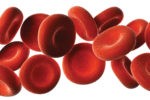Prostate Cancer

Let’s Give It the Attention It Deserves
Story by Jeanie Edgmon

This is not a comprehensive overview of prostate cancer. It is just a glint of reflection of a massive issue to which we could in no way do justice in one brief article. However, we would like it to serve as a call to action for each one of us to do what we can to change the tides in prostate cancer awareness, research, and treatment.
Ask most Americans what they know about prostate cancer and the answer is likely, “Not enough.” The reasons why are many, complex, and inextricably woven together.
Prostate cancer is the second leading cause of death in American men, with statistics that are very similar to breast cancer statistics, yet most are unaware of this fact.
According to the National Cancer Institution, in 2014 there were 3,327,552 women living with female breast cancer in the United States. Prostate cancer was not far behind with 3,085,209 men living with prostate cancer in the country.
In 2017, there were an estimated 252,710 new cases of breast cancer and 40,610 deaths. Once again, prostate cancer had similar statistics with 161,360 new cases and 26,730 deaths.
Since prostate cancer affects a similar number of men than women with breast cancer, why is breast cancer more commonly known?
One possible reason is the lack of awareness surrounding men’s health in general. Though statistics show that men suffer higher rates of death and serious illness than women and have a life expectancy that is 10% lower than that of women, our culture generally places less focus on men’s health. For instance, the National Institutes of Health has an office for women’s health, but none for men. There are also far fewer awareness campaigns regarding men’s health issues.
Funding for cancer research is also often related to awareness. According to the American Cancer Society, cancers receive grants, funding amounts, and specific amounts of money towards research. The funded amount is the total value of funding that was awarded. The specific amount is found by multiplying the total funding amount by the percent relevance for the type of cancer in question. Relevance may be measured in several ways including “Years of Life Lost” (YLL) which measures the severity of death in regard to the age it occurs, “Disability-Adjusted Life-Years” (DALY) which estimates the effects of non-lethal disabilities incurred by disease and economic metrics focus on the losses to tax revenue, productivity or direct medical expenses.
In 2018 breast cancer received 162 grants, over $91 million in funding, and a specific amount of nearly $63 million. On the other hand, prostate cancer only received 59 grants, $41 million in funding, and a specific amount of about $27 million.
This of course means that there will be more fundraising campaigns surrounding cancers the public views are most threatening and impactful and therefore, we are likely to learn more about those cancers.
Another problem is that most men put far more time into the maintenance of their car than they do into their own personal health maintenance until they develop obvious symptoms. Unfortunately, the prostate is a gland you can’t see or feel and prostate cancer has few symptoms until the disease is fairly progressed and those symptoms are often attributed to aging. Detection often requires an exam and Prostate-Specific Antigen (PSA) blood test screening which is very frequently delayed or avoided.
PSA is a protein produced by normal and malignant cells of the prostate gland. The PSA test measures the level of PSA in a man’s blood. Most healthy adult males have PSA (prostate-specific antigen) levels under 4. Higher PSA levels mean a higher chance of having prostate cancer. However, about 15% of men with a PSA below 4 will also have prostate cancer.
Many patients tend to view test results from a positive or negative viewpoint and can find these statistics confusing, which can lead to delays in further screenings.
But We Are Making Exciting Progress
Despite these barriers, we are making significant progress in the treatment of prostate cancer. For advanced prostate cancer, an emerging group of cancer therapies called radiopharmaceuticals is showing promise in improving survival rates, according to a recent large clinical trial. The trial included patients with a difficult-to-treat form of advanced prostate cancer, called metastatic castration-resistant prostate cancer that had gotten worse despite treatment with standard therapies.
In the study, patient-participants who received the drug called 177Lu-PSMA-617 along with standard therapies had improved survival rates over those who had standard therapies alone.
Another exciting advance is in the area of genetics. New research is helping scientists understand how prostate cancer develops as well as how family history plays a role. A recent study led by Kathleen Cooney, M.D., professor and chair of the Duke University Department of Medicine, found that the history of breast and ovarian cancers in female relatives can increase a man’s risk for prostate cancer, possibly stemming from mutations in genes like BRCA1/2, the study noted.
Researchers found that family history was most strongly associated with early-onset of the disease which underscores the importance of early screening in higher-risk patients as well as the importance of including this information in family history in regard to risks. Currently, the National Comprehensive Cancer Network recommends that male BRCA 1/2 mutation carriers begin prostate cancer screening with prostate-specific antigen (PSA) testing and a digital rectal exam by age 40. While considered a disease of older men typically over 65, today over 10% of new diagnoses in the US are in younger men aged 55 and younger.
With Awareness, Hope
At Healthy Kansas City, we are unabashedly and relentless proponents of awareness, advocacy, research, and education. These are the factors that drive funding and discovery. Together, we can raise awareness, have tough discussions, educate about risk factors, and advocate for further research. It is up to us to keep men’s health issues such as prostate cancer at the forefront of societal awareness and keep pushing for change.





